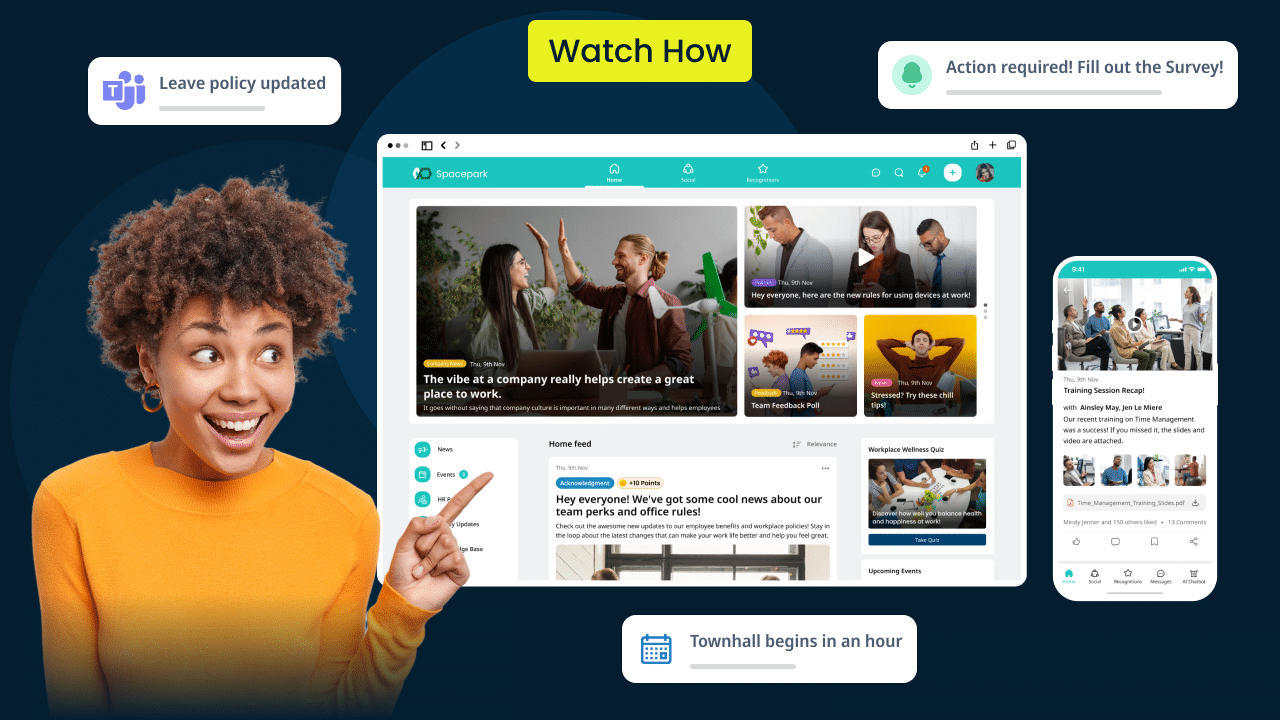In the current fast-paced business world Effective communication is the foundation of an organization’s success. No matter if employees are working remotely, on-site, or in a hybrid model, seamless interaction is essential to ensure productivity and engagement. Business communication software can play a crucial role. Making investments in internal communication software can cut down on confusion at work and foster an environment that is based on honesty, collaboration, inclusion and teamwork.
If you are still using old email programs, chat apps that don’t work, or communication channels that are dispersed It’s an ideal time to think about modern platforms for internal communications. These platforms can help you improve your communication and help you align your workforce.

Image credit: hubengage.com
Why businesses need advanced internal communications tools
Gone are the days when bulletin boards and emails were the primary ways to interact with employees. Today, businesses operate in a world that is dominated by instant messaging and live collaboration. Without the right tools for internal communications, companies face the risk of disengagement, miscommunication and reduced effectiveness.
1. Improved Engagement of Employees
Today’s workplace faces a number of issues, such as motivating and engaging employees. A well-designed internal communications system assures that employees, regardless of their location feel included and heard. Features like:
Real-time announcements.
Interactive feedback polls
Employee Recognition Programs
Platforms for mobile communication
Assisting companies in creating a feeling of belonging among their employees will result in more productivity and better job satisfaction.
2. Eliminate Workplace Confusing and Enhance the clarity of work
When employees don’t receive clear communication, misunderstandings happen. This results in delayed deadlines, work that is duplicated and a general feeling of discontent. Software for business communication provides:
Centralized information sharing Employees are able to access updates, documents and other resources through one unified space.
Tracking tools for tasks and projects Everybody knows their job and what is expected of them.
Clearer workflows: Eliminates the bottlenecks and ensures that projects are efficiently moved.
Companies that implement formal internal communication systems find that employees can work more efficiently and are more confident.
3. Transparency and Culture in the workplace
Open communication and trust are the pillars of a healthy company culture. When employees feel they are kept in the loop about corporate goals, changes and developments and updates, they are more likely to remain in the loop and be a part of the company’s mission.
Modern communication tools have features such as:
Videos of leadership messages Direct communication between the executives and employees.
Town halls, Q&A meetings for employees, promoting two-way communication.
Recognizing employees’ hard work by recognizing and rewarding them.
In fostering honest and open communication, companies can cut down on the amount of turnover and build a loyal workforce.
4. Supporting Remote & Hybrid Work Models
With more companies embracing remote and hybrid work setups traditional methods of communication are no longer adequate. Whatever location the team is working they should have instant access to all their documents conversations, meetings, or even chats.
Cloud-based internal communications software enables:
Collaboration across time zones is seamless.
Document sharing is made simple, as well as co-editing in real time.
Virtual meetings can be arranged using video conference.
Mobile-friendly apps that allow mobile communication.
Organizations that employ tools for remote team communication are more efficient and productive than those that still rely on traditional methods of communication.
5. Enhancing Crisis Management & Business Continuity
Emergencies can strike anytime, whether it’s security threats or market disruption, or company restructuring. A well-designed tool for business communications ensures employees get the latest information on safety and security, and other necessary instructions during a time of emergency.
Modern tools for internal communication offer:
Send instant notifications to important alerts
Automated workflows for messages to aid employees in emergency situations
Centralized knowledge bases, with emergency protocols
Being prepared is the key to avoiding disruptions and ensuring productivity.
Internal Communication Software: The Future
As technology evolves, the expectations for business communication software. AI-powered communication platforms give businesses advantages through automation of repetitive tasks, analysis of employee engagement data, and personalized strategies for communication.
Some emerging trends are:
AI chatbots are able to provide instant employee support.
The analysis of workplace mood with the help of the Sentiment Analysis.
Interactive dashboards that provide real-time communications analytics.
The trend towards smart, intuitive internal communications software helps businesses build stronger, more connected teams as well as improve overall efficiency.
Last Thoughts: Selecting the Right Internal Communication Platform
If your company is still struggling with miscommunication, disengaged employees, or disconnected workflows, it may be time to upgrade your internal communication tools. The ideal business communication software doesn’t just help teams stay connected but also transforms the entire workplace to a hub of collaboration, transparency and engagement.
Incorporating modern internal communications software is no longer an option, it’s essential for companies that are determined to keep up with the times, retain top talent, and foster a thriving culture of work.
Are you seeking the best platform for internal communication in your company? Look into solutions that deliver real-time messages, mobile accessibility and engagement with leadership.
